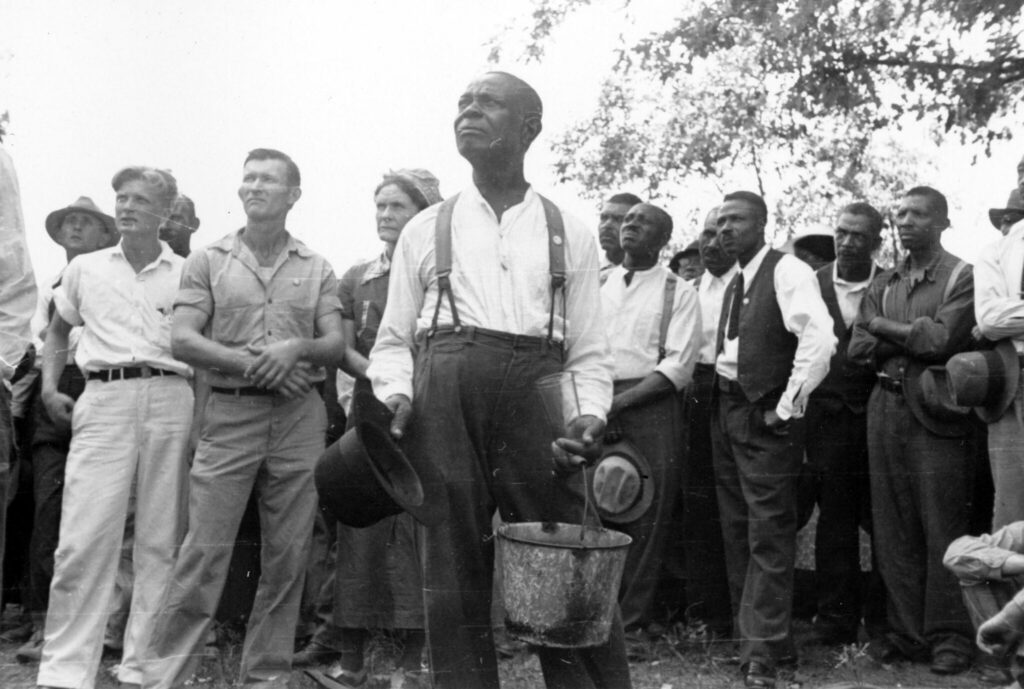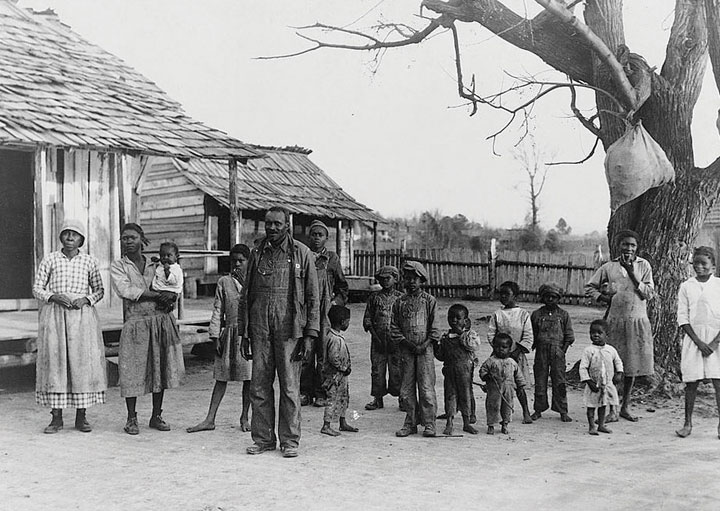

Negroes ain’ black—but RED!
Teacher Lenin done said
Brothers all oppressed an’ po’
Ain’t it so? Sho!
“No Mo’, No Mo'” (Communist Party song from the 1930s)
The Communist Party USA gained its reputation in the early 1930s for fighting against racism and capitalist exploitation of all workers. The Party was staunchly anti-racist, but it was still undoubtedly plagued by white chauvinist attitudes. Despite these contradictions in the struggle against racial oppression, the Party represented one of the only organizing spaces where Black and white radicals worked alongside one another to build a better society. After the Communist International in 1928 defined African Americans in the Southern Black Belt as an oppressed nation deserving of political sovereignty, the CPUSA began helping sharecropper organizers in Tallapoosa County, Alabama. Historians such as Harvey Khler and Beverly Tomek have argued that the Black Belt Thesis was forcibly imposed by “Moscow” (1) or that it had no relevance in organizing (2). This leaves a gap in scholarship that recognizes Black communists’ agency in developing their own political line based on experiences working, organizing, and studying. How did Black sharecroppers use a Marxist-Leninist framework to build power? Using primary sources, critical texts from Marxist theoreticians and revolutionaries on the National Question, and secondary analyses, I hope to answer this question. In response to labor exploitation and racist oppression, the members of the Alabama Sharecroppers Union used a Marxist-Leninist analysis to guide their resistance because it allowed them to build power not only as workers, but also as subjects of an internal colony. This question is important because their insights are relevant today in the fight against capitalism and white supremacy.

Notes
(1) Klehr, Harvey. 1984. The Heyday of American Communism: The Depression Decade. New York: Basic Books. Pg. 327.
(2) Tomek, Beverly. “The Communist International and the Dilemma of the American ‘Negro Problem’: Limitations of the Black Belt Self-Determination Thesis.” WorkingUSA 15, no. 4 (2012): 549–76. https://doi.org/10.1111/wusa.12004.


